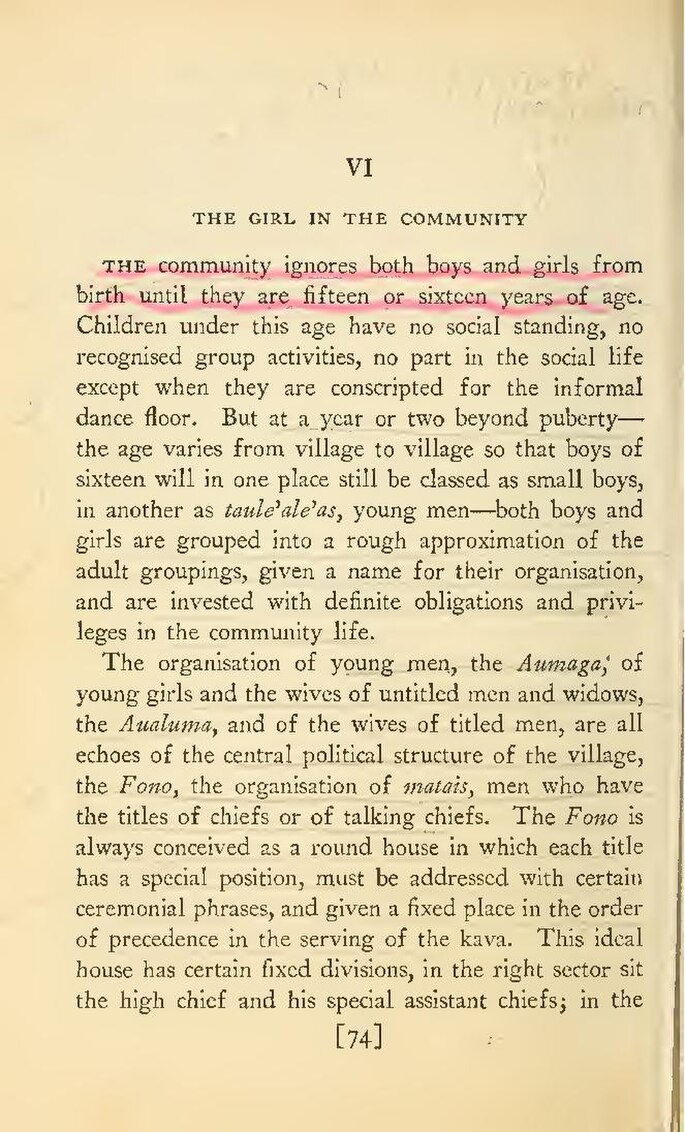VI
the girl in the community
the community ignores both boys and girls from birth until they are fifteen or sixteen years of age. Children under this age have no social standing, no recognised group activities, no part in the social life except when they are conscripted for the informal dance floor. But at a year or two beyond puberty—the age varies from village to village so that boys of sixteen will in one place still be classed as small boys, in another as taule'ale'as, young men—both boys and girls are grouped into a rough approximation of the adult groupings, given a name for their organisation, and are invested with definite obligations and privileges in the community life.
The organisation of young men, the Aumaga, of young girls and the wives of untitled men and widows, the Aualuma, and of the wives of titled men, are all echoes of the central political structure of the village, the Fono, the organisation of matais, men who have the titles of chiefs or of talking chiefs. The Fono is always conceived as a round house in which each title has a special position, must be addressed with certain ceremonial phrases, and given a fixed place in the order of precedence in the serving of the kava. This ideal house has certain fixed divisions, in the right sector sit the high chief and his special assistant chiefs; in the
[74]
